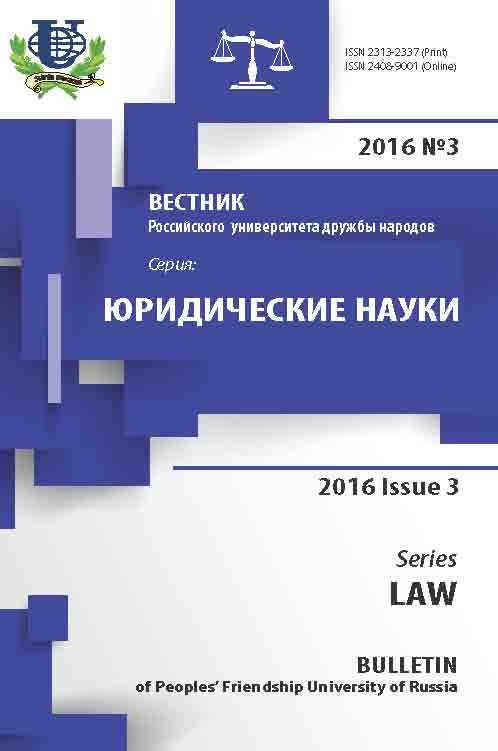The History of Russian State and Law: Domain-Branch approach
- Authors: Minnikes I.V1
-
Affiliations:
- Russian State University of Justice (RPA Russian Ministry of Justice)
- Issue: No 3 (2016)
- Pages: 43-56
- Section: Articles
- URL: https://journals.rudn.ru/law/article/view/14781
Cite item
Full Text
Abstract
The article assesses the practical significance of the a chronological approach to the study of the History of Russian state and law, ruling in the educational literature. Noted that this approach makes it difficult to identify patterns of development of state and law, since the information about state and law is closed within a certain historical period and is often incomplete, fragmentary. The author offers several new guidelines that can improve the course of History of Russian state and law. There are the purposeful domain-branch targeted orientation of the information about state and law, the use of comparative legal diachronic method of analysis of historical and legal phenomena and coherent structured presentation of information about the history of Russian state and law. The purposefulness allows to form some main themes, each of which covers the certain state-legal phenomenon (for example, the evolution of sources of law) or certain branch of law (e.g. the history of civil law, the evolution of criminal law, etc.). Every branch of law or phenomenon is investigated by means of comparative legal diachronic method. This allows to focus on a small number of related issues and to study the phenomenon or branch of law, not only in statics but also in dynamics, starting from the time of formation and to its modern state, tracing the main stages of evolution and development trends. The guideline of coherence and structuring of the presentation helps avoiding blanks in the presentation of information that allows to reconstruct a complete picture of the development of the branch of law or legal phenomenon. On the certain example of the evolution of national legislation about form of marriage were demonstrated the capabilities of the author's guidelines. The article in accordance to the guidelines of purposeful comparative historical coherence analysis explores the forms of marriage practiced in Russian state from X to XX century and makes important insights, both of theoretical and practical nature. It is established that in the earliest period two forms of marriage - pagan and Church competed among themselves. Church marriage became exclusively dominant only at the end of the XVI century. However, Church marriage has never been the sole legal form of marriage. Along with it existed pagan rites of «aborigines», schismatic marriages and non-Christian and mixed marriages, and also civil marriage. On the basis of the comparative analysis it was established that the ritual and ceremonial side of marriage were complemented by formal side in the XVIII century. The formal side of the marriage gradually entirely displaces the ritual and in the mid-twentieth century becomes the only proof of the legality of the marital union. The conclusion on the positive impact of the proposed principles of improving the course of the History of Russian state and law made, and that this approach matches the idea of practice-based learning.
About the authors
Irina V Minnikes
Russian State University of Justice (RPA Russian Ministry of Justice)
Email: ivminnikes@mail.ru
Irkutsk Institute (branch) 4, Nekrasova st., Irkutsk, Russia, 664011
References
















